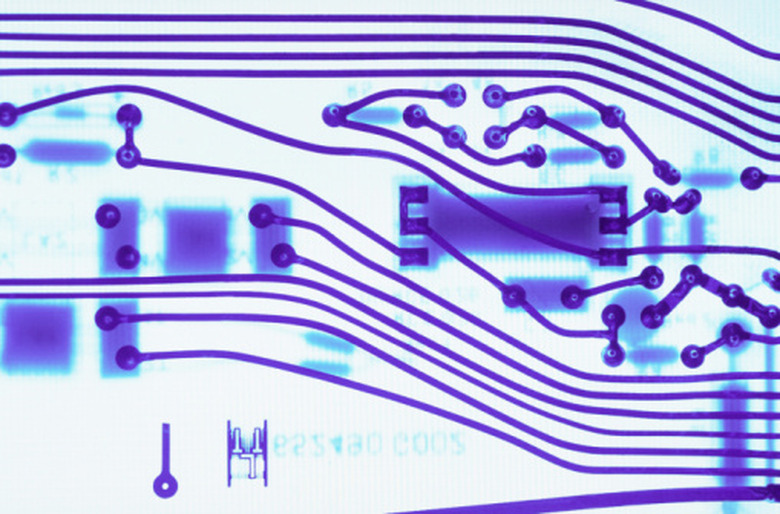How To Convert Amps To Electrons Per Second
Physicists attribute electricity to the movement of electrons, those tiny, electrically negative particles that encircle every atom. The unit of electric current is the ampere, named after 19th-century French physicist André-Marie Ampère. By definition, an ampere is equal to one coulomb per second. To calculate the number of electrons in one ampere, you therefore need to know the charge of an individual electron in coulombs. That turns out to be 1.602 × 10-19 coulombs. That's all the information you need to convert amps to electrons per second.
TL;DR (Too Long; Didn't Read)
In one ampere of current, 6.242 × 1018 electrons are flowing every second. Multiply the strength of the current by this number to find the number of electrons flowing in the circuit per second.
What Is a Coulomb?
What Is a Coulomb?
The coulomb is the unit of static charge in the MKS (meter, kilogram, second) measurement system. It was named after another French physicist, Charles Augustin de Coulomb, who did most of his work in the 18th century. The definition of the coulomb is based on the statcoulomb, a unit of charge in the CGS (centimeters, grams, seconds) system. This was originally defined as the charge needed by two equally charged particles separated by 1 centimeter to repel each other with a force of 1 dyne. You can derive coulombs from statcoulombs, but contemporary scientists usually define coulombs in terms of amperes, not the other way around. The definition of 1 coulomb is the amount of charge carried in one second by a current of 1 ampere. Scientists do happen to know the charge of an individual electron, though, thanks to a famous experiment conducted in the early 20th century.
Millikan's Oil Drop Experiment
Millikan's Oil Drop Experiment
American physicist Robert Millikan conducted the oil drop experiment in 1909, and it earned him the Nobel Prize. He placed a charged drop of oil between two electrically charged plates and adjusted the voltage until the drop was suspended in air. Because he could calculate the force of gravity on the drop and the force of the electric field, he could determine the charge on the drop. He conducted the experiment with a variety of charges on the drop and found that the charge always varied by a multiple of a particular number, which he concluded was the charge on an individual electron. It turned out to be 1.602 × 10-19 coulombs.
The Number of Electrons per Second in an Ampere
The Number of Electrons per Second in an Ampere
One electron has a charge of 1.602 × 10-19 coulombs, so you can find the number of electrons in 1 coulomb of charge by taking the inverse of this number. Doing the arithmetic, you find:
1 coulomb = 6.242 × 1018 electrons
1 ampere is equal to 1 coulomb per second, which means:
1 ampere = 6.242 × 1018 electrons per second
Converting From Amperes to Electrons per Second
Converting From Amperes to Electrons per Second
The relationship derived above constitutes a conversion factor. To convert from amperes to electrons per second, multiply that conversion factor by the current strength in amperes. For example, in a current of 15 amps:
\(15\times (6.242\times 10^{18})=9.363\times 10^{19}\)
9.363 × 1019 electrons are flowing per second. In a current of 7 mA (0.007 amps), 4.369 × 1016 electrons are flowing per second.
Cite This Article
MLA
Deziel, Chris. "How To Convert Amps To Electrons Per Second" sciencing.com, https://www.sciencing.com/convert-amps-electrons-per-second-8628812/. 13 December 2020.
APA
Deziel, Chris. (2020, December 13). How To Convert Amps To Electrons Per Second. sciencing.com. Retrieved from https://www.sciencing.com/convert-amps-electrons-per-second-8628812/
Chicago
Deziel, Chris. How To Convert Amps To Electrons Per Second last modified August 30, 2022. https://www.sciencing.com/convert-amps-electrons-per-second-8628812/
